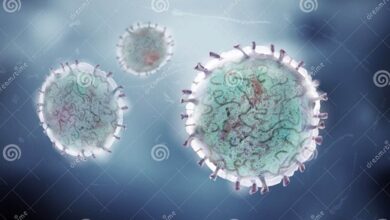Autotrophs and Heterotrophs
In this article we will provide you the difference between autotrophs and heterotrophs Similarities and FAQs.
What does autotrophs mean?
Autotrophs are organisms capable of producing their own food from inorganic matter . This characteristic makes them unique beings in the animal kingdom, since they are adapted to obtain energy directly from the sun or from chemistry. Autotrophs use photosynthesis to transform sunlight into glucose to generate energy. Many plants use this mechanism to convert carbon dioxide and water into carbohydrates, while other types, such as anaerobic bacteria, use it with inorganic sulfides to release electricity or heat. Most autotrophs use a pigment called chlorophyll to absorb sunlight, which is why many greens are considered such.
What does heterotrophs mean?
Heterotrophs are organisms that obtain their energy by consuming pre-existing organic matter. This differs from autotrophs, which make their own food from inorganic compounds like carbon dioxide and sunlight. Heterotrophs are widespread in all kingdoms of the animal kingdom: from insects to mammals, through protists and fungi. They are usually predators or parasites, but there are also other types of heterotrophism , such as the saprobiont or the coprophage (animals that feed on excrement). Humans are a clear example of heterotrophism since we nourish ourselves with food made from organic materials from the environment.
Similarities Between Autotrophs and Heterotrophs
Autotrophs and heterotrophs are two types of organisms that differ in how they get their energy to grow. Autotrophs produce their own food from carbon dioxide, sunlight, or alcohols, while heterotrophs consume ready-made organic material from other organisms. Both classes also share the same metabolic process for transforming raw materials into usable energy. Both groups rely on chemical reactions to convert food into the energy needed to perform vital functions such as cell movement and cellular respiration. Some bacteria can be interchangeably autotrophic or heterotrophic, meaning they can use a variety of distinctive food sources as needed.
Differences between autotrophs and heterotrophs
Autotrophs are organisms that can make their own food from sunlight or inorganic chemical compounds . This form of nutrition is called photosynthesis. Heterotrophs , by contrast, cannot photosynthesize and therefore must obtain their energy by eating other living organisms or dead organic matter . Green plants and microorganisms such as algae are examples of autotrophs, while many creatures in the animal kingdom are heterotrophs, including humanoids. In general, heterotrophs have a more complex metabolism than autotrophs since they need to consume nutrients to produce energy instead of generating it directly from sunlight or other externally present elementals.
Frequent questions
What are autotrophs?
Autotrophs are organisms that make their own food from inorganic nutrients, such as carbon dioxide and minerals in water. These creatures can convert sunlight or chemical energy into biologically useful energy to grow and reproduce. Some examples of autotrophs include plants, algae, and photosynthetic bacteria.
What are autotrophs and examples?
Autotrophs are organisms that can make their own food from simple chemical elements and energy. These creatures do not need to eat organic matter to survive, but instead use sunlight, atmospheric nitrogen, or carbon dioxide to produce energy. Some examples are: green algae, photosynthetic bacteria, land plants, and marine animals.
What are autotrophs and heterotrophs examples?
Autotrophs: Autotrophs are organisms capable of producing their own food from sunlight, carbon dioxide, and water. These creatures provide energy for the entire food chain using a form called photosynthesis. Some common examples include plants, algae, and some bacteria.Heterotrophs: Heterotrophs are organisms that depend on other living things for their source of energy and nutrients. These creatures cannot carry out photosynthesis on their own, so they have to consume the products generated by other autotrophic organisms or detritus (dead remains). Some common examples include animals, fungi, and many different bacteria.
What are heterotrophs examples?
Heterotrophs are organisms that cannot make their own food, but must obtain it from external sources. These organisms have a more Each type of memory has its own operation, although all of them cooperate to carry out a complete memorization process. This is complex metabolism and depend on organic material to survive. Common examples of heterotrophs include humans, animals, seed plants, fungi, and bacteria.
What are examples heterotrophic beings?
Heterotrophs are organisms that obtain their energy and nutrients by consuming other organisms. This means that heterotrophs depend on other natural resources by man. In fact, in these areas, not only species to survive. The most common examples of heterotrophs include animals, birds, reptiles, amphibians, and many parasitic plants (including rue, hops, and ivy). Other examples include blood worms (Anopheles gambiae), land snails (Helix aspersa), and bees (Apis mellifera).
What animal is autotroph?
An autotrophic animal is an organism that produces its own food from inorganic matter (usually light or carbon dioxide). These include plants, blue-green algae, and photosynthetic bacteria.
What are autotrophs and heterotrophs?
Autotrophs are organisms capable of producing their own food from inorganic matter such as water, carbon dioxide, and minerals. This class of organisms produces its own nutrients through the process known as photosynthesis. The most common examples include green plants, algae, and certain bacteria. Heterotrophs are those organisms that feed directly or indirectly (by absorption) on organic substances already prepared from abroad. Instead of producing their own food, heterotrophs obtain energy by ingesting and digesting other living organisms or organic matter. Typical examples include animals, fungi, and many microscopic life forms such as protists or saprophytic bacteria.
What is heterotrophs and their function?
Heterotrophs are organisms that cannot synthesize their own food, therefore they must obtain their energy and nutrients from already existing organic matter. Some common examples of heterotrophs are animals, carnivorous plants, and some bacteria. Its main function is to provide a source of energy for cell growth through the ingestion or direct absorption of nutrients from the environment. This intake allows them to break down Each type of memory has its own operation, although all of them cooperate to carry out a complete memorization process. This is complex materials into simpler forms which are then converted into usable biomass for themselves.




